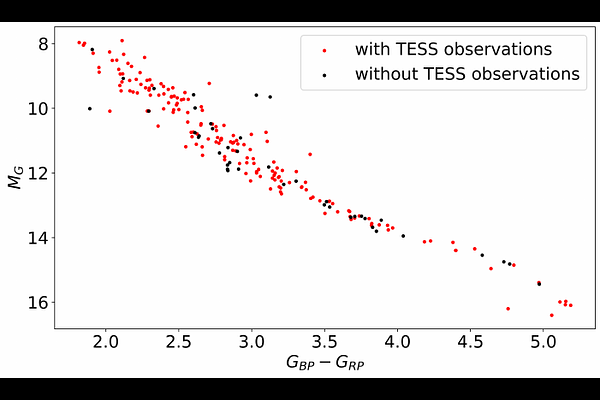Exploring short-term stellar activity in M dwarfs: A volume-limited perspective

Exploring short-term stellar activity in M dwarfs: A volume-limited perspective
G. Galletta, S. Colombo, L. Prisinzano, G. Micela
AbstractFlares are short-lived but energetic manifestations of stellar activity. Studying them is crucial, as they emit intense high-energy radiation that can impact the circumstellar environment, especially the atmospheres of orbiting planets. This is particularly relevant for M dwarfs, which frequently flare and often host planets within their habitable zones. Flare-driven photoevaporation and photochemical processes may significantly affect planetary evolution. In this work, we analyzed the flaring properties of a volume-limited, unbiased sample of nearby M dwarfs using data from the Transiting Exoplanet Survey Satellite (TESS). We selected stars within 10 pc from Gaia DR3 and used an iterative Gaussian process to remove long-term stellar variability from the light curves, isolating impulsive flare events. For each flare, we measured amplitude, duration, and total emitted energy. Our sample includes 173 stars and 17,229 detected flares, ranging from 0 to 76 flares per TESS sector. We focused on three representative stars to highlight the diversity in flare activity. Detected flares had energies above 10^29 erg and durations from 2 to 8000 seconds. We modeled cumulative energy distributions with one- and two-slope power-law fits, finding average slopes of -0.79 +/- 0.64 and -1.23 +/- 1.32, respectively. We introduced the Flare Energy Index (GF.01) to describe flare frequency, identifying two populations: fainter stars tend to produce fewer high-energy flares, while brighter stars exhibit more frequent low-energy flares. Finally, we investigated two highly active stars, G 227-22 and G 258-33, observed across many sectors, to study long-term flare behavior and energy trends.